The Mariana Trench the deepest part of the world’s oceans, is a mysterious and awe-inspiring geological feature that has captivated scientists, explorers, and ocean enthusiasts for decades. Located in the western Pacific Ocean, it is renowned for its extreme depth, unique ecosystems, and its role in the planet’s geological processes. In this blog, we will take an in-depth look at the Mariana Trench, exploring its location, formation, characteristics, biological life, and the fascinating exploration efforts that have unraveled some of its deepest secrets.
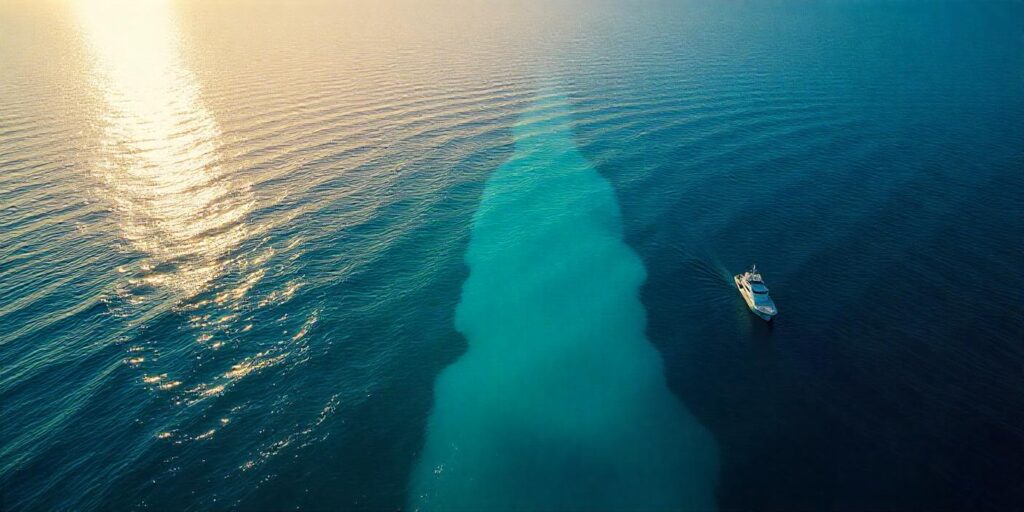
What is the Mariana Trench?
The Mariana Trench is the deepest oceanic trench on Earth, with its deepest point, the Challenger Deep, reaching depths of around 36,070 feet (10,994 meters), making it deeper than Mount Everest is tall. This trench is a crescent-shaped scar in the Earth’s crust and is located in the western Pacific Ocean, to the east of the Mariana Islands. It marks the boundary where the Pacific Plate is subducting beneath the smaller, oceanic Philippine Sea Plate.
Mariana Trench Location and Geography
The Mariana Trench is situated east of the Mariana Islands in the Pacific Ocean, which lie to the south of Japan and the east of the Philippines. The trench stretches for over 1,550 miles (2,500 kilometers) and reaches widths of up to 45 miles (72 kilometers). The trench is bordered by the Mariana Islands to the east and the oceanic basin to the west.
At its deepest point, the Challenger Deep, it plunges to an astonishing depth of 36,070 feet (10,994 meters). To put that into perspective, the trench is so deep that Mount Everest, the highest point on Earth, could easily be submerged in its depths, and the peak.
Geological Formation of the Mariana Trench
The Mariana Trench was formed by the complex interaction between two tectonic plates: the Pacific Plate and the Philippine Sea Plate. In geological terms, the trench is a subduction zone, where one tectonic plate is being forced underneath another. In this case, the Pacific Plate is slowly being pushed beneath the Philippine Sea Plate. As the oceanic crust of the Pacific Plate sinks into the Earth’s mantle, it creates a deep trench along the boundary.
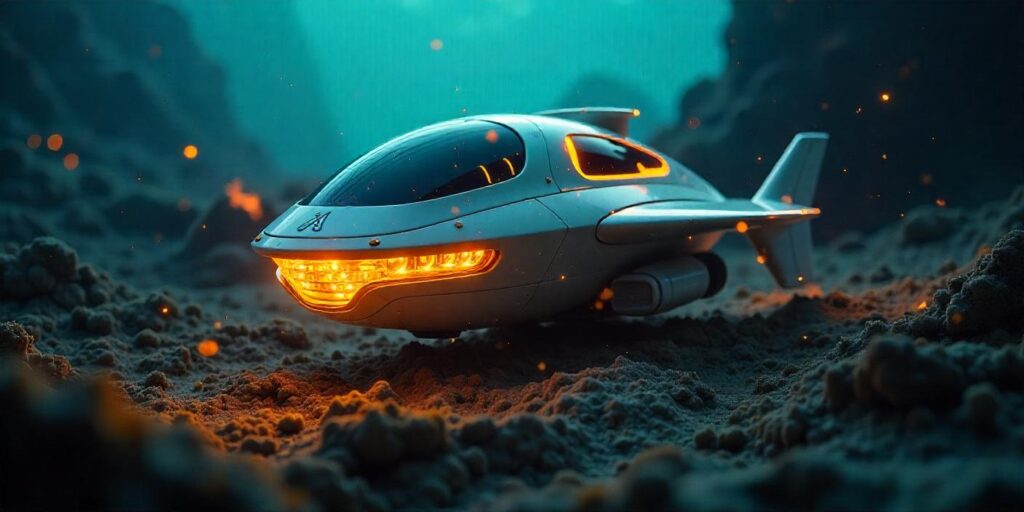
The process of subduction is a key driver of many geological phenomena, such as the formation of earthquakes, volcanic activity, and the creation of deep-sea trenches like the Mariana Trench. Subduction also leads to the formation of the volcanic island arc of the Mariana Islands, which sit above the trench and are the result of magma rising through the Earth’s crust due to the plate’s downward movement.
Mariana Trench Depth and Measurements
The Challenger Deep is the most profound point of the Mariana Trench and the deepest known part of the world’s oceans. Its depth has been measured at approximately 36,070 feet (10,994 meters), though measurements can slightly vary depending on the equipment used. To give a sense of scale, the trench is approximately seven miles (11 kilometers) deep, which is almost 1.5 times the height of Mount Everest.
Because of the extreme depth, the trench is a place of extreme pressure. The water pressure at the bottom of the trench is about 1,000 times the pressure at sea level, making it an inhospitable environment for most life forms. Despite these harsh conditions, life continues to thrive in the trench in unique ways.
Ecological Significance and Life Forms
Despite the crushing pressure, freezing temperatures, and complete lack of sunlight at such depths, the Mariana Trench is home to an astonishing variety of life. Organisms in this environment have adapted to survive under the extreme conditions of the trench, and they include some of the most bizarre and unusual creatures on Earth.
1. Extremophiles:
The organisms that live in the Mariana Trench are known as extremophiles—organisms that thrive in environments that are hostile to most other forms of life. These creatures have developed unique adaptations to cope with the intense pressures, cold temperatures, and lack of light. Some of the most well-known examples of extremophiles in the trench include:
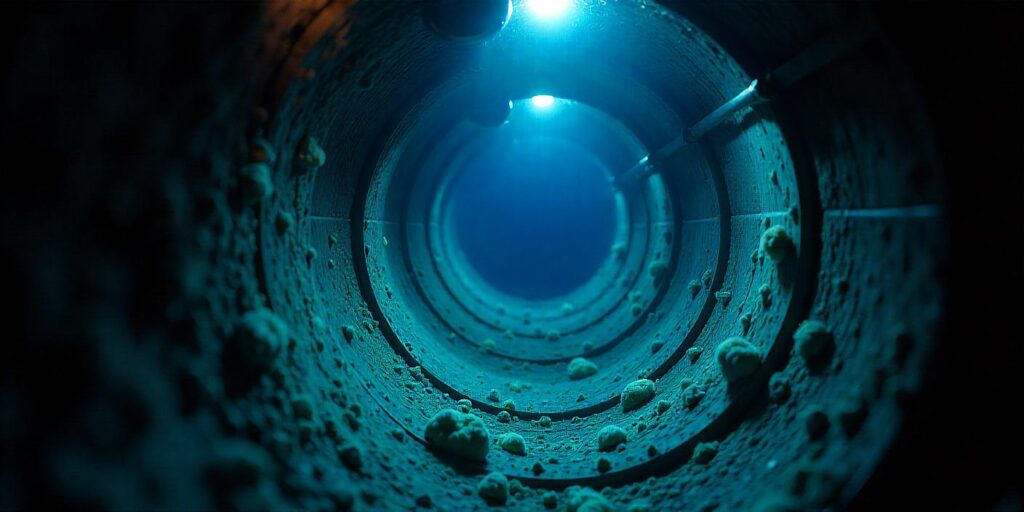
- Amphipods: These are small, shrimp-like creatures that are abundant in the trench. One species, known as the Halicephalobus amphipod, has been found at depths of over 36,000 feet (around 10,973 meters).
- Giant Single-Celled Organisms (Foraminifera): These microscopic creatures are found at the bottom of the trench and play a role in the ecosystem by consuming particles that sink from the upper layers of the ocean.
- The Deep-Sea Cusk-Eel: This eel is found at depths of over 26,000 feet (about 8,000 meters) and has adapted to life at extreme depths.
2. Bioluminescent Organisms:
Many creatures in the Mariana Trench exhibit bioluminescence—the ability to produce their own light. This phenomenon occurs because of special enzymes and proteins within the organisms’ cells that allow them to convert chemical energy into visible light. Some species of fish and jellyfish in the trench use this bioluminescence for hunting, communication, or mating purposes.
3. Unique Adaptations:
Creatures in the trench have adapted to life under immense pressure and total darkness. For example, their bodies are soft and flexible, which allows them to withstand the crushing pressures of the deep ocean. Some animals also have specialized enzymes that enable them to survive in the cold, while others have developed oversized, highly sensitive eyes to detect the faintest amount of light in the dark waters.
4. The Role of Microorganisms:
Microorganisms also play a crucial role in the trench’s ecosystem. These microbes break down organic matter that falls from the upper ocean layers, recycling nutrients in an environment where food is scarce. These bacteria and archaea are essential for the trench’s food web and help sustain the unique ecosystem that thrives there.
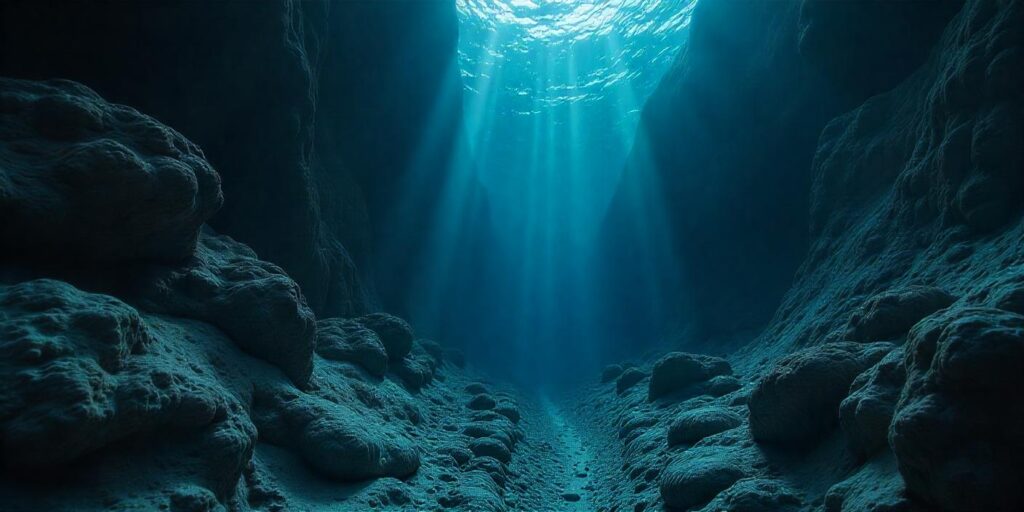
Exploration of the Mariana Trench
The Mariana Trench has long been a subject of fascination and mystery for scientists and explorers. The extreme depth and inaccessibility of the trench have made it a challenge to explore. However, over the years, advancements in technology have allowed for several significant missions to study the trench and its ecosystem.
1. The First Descent:
The first manned expedition to the Challenger Deep was in 1960, when oceanographer Jacques Piccard and Navy Lieutenant Don Walsh descended to the bottom of the trench in the Bathyscaphe Trieste. The descent took several hours, and the pair spent about 20 minutes at the bottom of the trench, making crucial observations about the environment. This groundbreaking mission was one of the first to show that life could exist at such extreme depths, though the data gathered from this expedition was limited.
2. Recent Exploration:
In 2012, film director James Cameron made history by piloting a solo expedition to the Challenger Deep in a specially designed submersible called the Deepsea Challenger. Cameron’s mission helped gather new scientific data and imagery of the trench’s ecosystem. During his descent, Cameron took detailed video footage and collected samples, including newly discovered species of organisms. His mission significantly expanded our understanding of the trench’s ecosystem.
3. Technological Advancements:
Modern technology, including unmanned submersibles, remotely operated vehicles (ROVs), and advanced sonar mapping, has enabled scientists to study the trench in greater detail. These tools allow for precise mapping of the trench’s features, collection of samples, and observation of the creatures that inhabit the trench. For instance, ROVs such as the Nereus and Limiting Factor have provided valuable data about the trench and its depths.
Environmental Concerns and the Mariana Trench
Although the Mariana Trench is far removed from human activity, it is not immune to environmental threats. In recent years, there has been growing concern about pollution in the deep ocean, particularly plastic waste. In 2019, a team of scientists discovered that even at the bottom of the Mariana Trench, in the Challenger Deep, they found traces of plastic pollution. This discovery highlights the far-reaching impacts of human activity on the planet, even in the most remote and inaccessible parts of the Earth.
Additionally, the trench’s ecosystem is highly sensitive to environmental changes, such as ocean acidification and climate change. As the oceans warm and CO2 levels rise, the deep-sea environment may undergo shifts that could have long-term impacts on the life forms that inhabit it.
Conclusion
The Mariana Trench is a fascinating and mysterious part of our planet that continues to captivate scientists and explorers. As the deepest part of the Earth’s oceans, it represents the extreme depths of our planet’s geology and ecosystems. The trench’s unique ecosystem, populated by extremophiles, bioluminescent organisms, and other bizarre creatures, highlights the adaptability of life in even the most extreme environments.
Exploration of the trench is ongoing, with new technologies and missions continually unveiling new information about its depths. Despite the challenges, the trench remains an important area of study, not only for understanding life in extreme conditions but also for learning more about Earth’s geological processes and the impact of human activity on the environment.
As we continue to explore the depths of the Mariana Trench, it is likely that more secrets will be uncovered, and the trench will remain a symbol of the unknown and the unexplored mysteries of our planet.
How Many People Have Dived into the Mariana Trench Safely?
The Mariana Trench, specifically the Challenger Deep—the deepest known point of the world’s oceans—is one of the most inaccessible and perilous places on Earth. Its extreme depth, immense pressure, and complete lack of light make it a daunting location for any kind of human exploration. However, in recent decades, technological advancements and brave individuals have made it possible for people to safely descend into this abyss. While the number of people who have successfully dived to the bottom of the Mariana Trench is relatively small, each mission has provided groundbreaking insights into the trench’s environment, its extreme conditions, and the resilience of life at such depths.
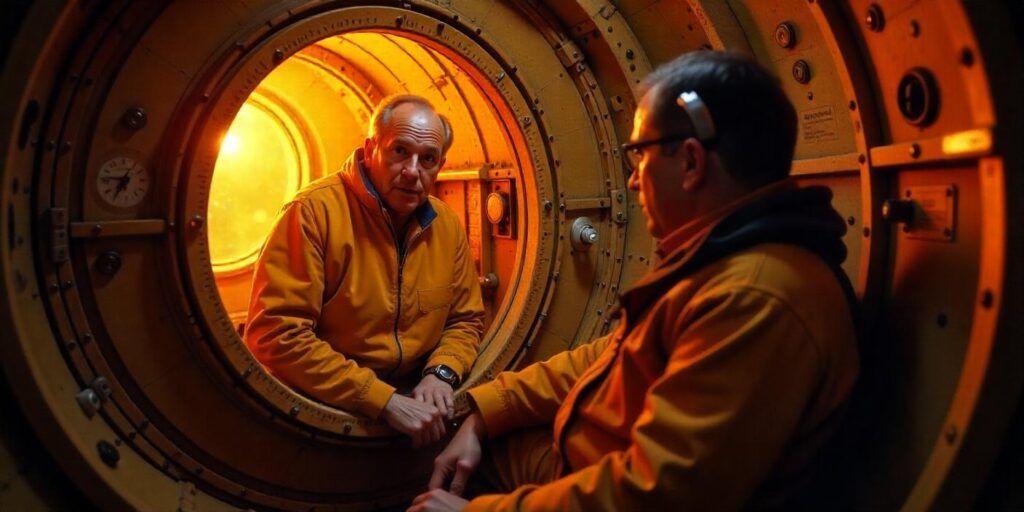
In this blog, we will explore the history of manned dives to the Mariana Trench, the number of people who have dived there, the technology used to achieve these dives, and the significance of these missions.
Overview of the Mariana Trench An Oceanic Abyss
The trench is formed by the subduction of the Pacific Plate beneath the Philippine Sea Plate, creating a crescent-shaped scar in the ocean floor. The deepest point in the trench, called Challenger Deep, reaches a depth of approximately 36,070 feet (10,994 meters), making it the deepest known point in the world’s oceans.
To give a sense of the extreme conditions at these depths, consider that at the bottom of the trench, the pressure is over 1,000 times the pressure at sea level. Additionally, the temperature is just above freezing, and there is no natural light, leaving the trench in almost complete darkness.
Because of these extreme conditions, reaching the bottom of the Mariana Trench is no easy feat. For many years, it was considered an impossible task for humans to reach such depths. However, several daring pioneers and their use of advanced technology have made these treacherous dives possible.
The History of Manned Dives to the Mariana Trench
1. The First Successful Descent: Jacques Piccard and Don Walsh (1960)
The first successful manned descent to the Challenger Deep was accomplished on January 23, 1960, by Swiss oceanographer Jacques Piccard and U.S. Navy Lieutenant Don Walsh. They descended in the Bathyscaphe Trieste, a submersible specially designed for deep-sea exploration. This was an incredible achievement that pushed the boundaries of human exploration, as no one had ever reached such extreme depths before.
The Bathyscaphe Trieste was a spherical vessel made of steel and titanium, and it was equipped with a flotation tank that allowed the vessel to sink and then return to the surface. The descent to Challenger Deep took about five hours, and the two explorers spent about 20 minutes at the bottom of the trench before beginning their ascent. During this time, they observed the trench’s environment, but the mission was mostly focused on demonstrating the feasibility of reaching such depths.
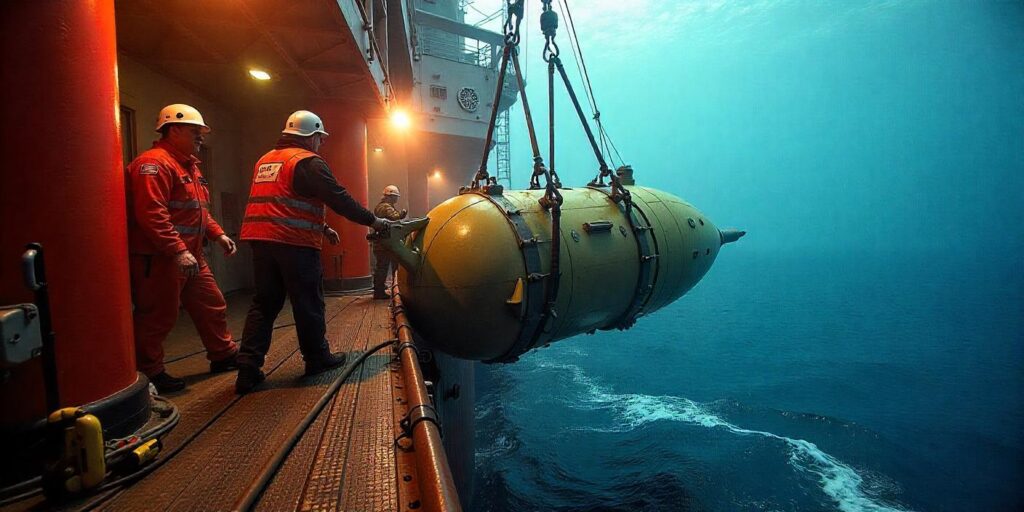
While their mission was a success, the technology of the time limited their ability to collect detailed data or conduct extensive exploration. Nevertheless, the successful descent of Piccard and Walsh marked a major milestone in the history of ocean exploration.
2. James Cameron’s Solo Descent (2012)
More than 50 years later, another groundbreaking mission occurred when James Cameron, the film director of Titanic and Avatar, made a solo dive to the Challenger Deep on March 26, 2012. Cameron’s dive, which was part of the Deepsea Challenger Expedition, represented a significant leap in technology and exploration. Unlike the Bathyscaphe Trieste, Cameron used a highly advanced submersible that was capable of reaching the deepest part of the trench and collecting valuable scientific data.
Cameron piloted the Deepsea Challenger, a custom-built submersible designed to withstand the crushing pressures of the Mariana Trench. The submersible was made of a specially developed composite material and was equipped with state-of-the-art technology, including HD cameras and scientific instruments. Cameron descended to the Challenger Deep in a single, four-hour descent, reaching a depth of approximately 35,787 feet (10,908 meters).
During his time at the bottom, Cameron spent around three hours exploring and filming the environment. He also collected scientific samples, including rock samples and biological specimens, which were later analyzed by marine biologists. His successful solo descent and exploration provided the world with the first real-time images and footage of the trench’s depths and the life forms that inhabit it.
Cameron’s dive was also significant because it showed that solo missions to extreme depths were possible, paving the way for future explorers to undertake similar expeditions.
3. Victor Vescovo’s Multiple Dives (2019)
The next significant milestone in manned exploration of the Mariana Trench occurred in 2019, when Victor Vescovo, a private equity investor and explorer, made several dives to the Challenger Deep as part of the Five Deeps Expedition. Vescovo’s mission was notable for its consistency and determination, as he successfully completed four dives to the bottom of the trench over the course of several months.
Vescovo descended in a specially designed submersible known as the Limiting Factor, which was built for extreme deep-sea exploration. The Limiting Factor was created by the EYOS Expeditions team and the Triton Submarines company. It was designed to be the first submersible capable of repeatedly reaching the Challenger Deep without risking structural failure.

Vescovo’s first dive took place on April 28, 2019, when he reached a depth of approximately 35,856 feet (10,927 meters). His multiple dives provided scientists with valuable information about the geological features of the trench and the creatures that live there. Vescovo also collected biological and geological samples during his expeditions, including the discovery of new species and a variety of microbes at extreme depths.
His dives were also part of a larger effort to explore the world’s five deepest oceanic trenches, with Vescovo having reached the bottom of the Mariana Trench, the Puerto Rico Trench, the South Sandwich Trench, the Java Trench, and the Tonga Trench during the same expedition.
4. Other Exploration Attempts
While Piccard, Walsh, Cameron, and Vescovo are the most notable individuals to have dived to the bottom of the Mariana Trench, other dives have been made to explore different parts of the trench, though these have been largely done with unmanned submersibles or remotely operated vehicles (ROVs). For example, in recent years, scientific expeditions have utilized ROVs like the Nereus (which tragically was lost during an expedition in 2014) to collect data from the trench.
Although humans have only descended into the Challenger Deep a handful of times, these historic dives have contributed significantly to our understanding of the deep-sea environment and its inhabitants.
The Technology Behind Manned Dives
Reaching the depths of the Mariana Trench requires specialized technology to protect the explorers from the extreme pressures, freezing temperatures, and lack of light. Some of the key technological advancements that have made these dives possible include:
1. Pressure-Resistant Submersibles
The submersibles used to explore the Mariana Trench are specially designed to withstand the crushing pressures of the deep ocean. The pressure at the bottom of the trench is over 1,000 times the pressure at sea level, meaning that any vessel that descends to this depth must be built with materials that can handle such extreme conditions. Submersibles like the Bathyscaphe Trieste, Deepsea Challenger, and Limiting Factor are constructed with durable materials such as titanium, steel, and specially reinforced composites that can resist the immense pressure.
2. Advanced Navigation and Communication Systems
In such extreme depths, communication with the surface is extremely challenging. Submersibles like the Deepsea Challenger and Limiting Factor use advanced navigation and communication systems that rely on acoustic signals to maintain contact with support vessels on the surface. These systems allow explorers to navigate the trench and transmit data in real-time, which is critical for scientific observations and safety.
3. Life Support and Temperature Regulation
Given the freezing temperatures at the bottom of the Mariana Trench, life support systems are essential for human survival. Submersibles are equipped with sophisticated systems that provide breathable air, regulate temperature, and remove carbon dioxide. These systems ensure the safety and comfort of the explorers during their long hours in the depths of the ocean.
How Many People Have Safely Dived into the Mariana Trench?
As of 2025, only a handful of people have successfully dived to the Challenger Deep in the Mariana Trench. The most notable figures are:

- Jacques Piccard and Don Walsh (1960)
- James Cameron (2012)
- Victor Vescovo (2019, with multiple dives)
Each of these explorers has made significant contributions to our understanding of the trench, and their missions have demonstrated the capability of human exploration at extreme ocean depths. While other explorers have used unmanned submersibles to explore the trench, these individuals represent the only ones who have safely completed manned descents to the Challenger Deep.
Conclusion
Exploring the Mariana Trench, particularly the Challenger Deep, is a remarkable and perilous achievement that requires cutting-edge technology and immense courage. Only a select few individuals have had the opportunity to dive to these extreme depths, and each of their missions has brought valuable insights into one of the most mysterious and inaccessible places on Earth.
As technology continues to advance, it’s likely that more daring explorers will attempt to venture into the depths of the Mariana Trench. While the number of people who have safely dived into the trench remains small, each mission has provided a glimpse into the wonders and challenges of the deep ocean, opening up new frontiers in oceanography and human exploration.

